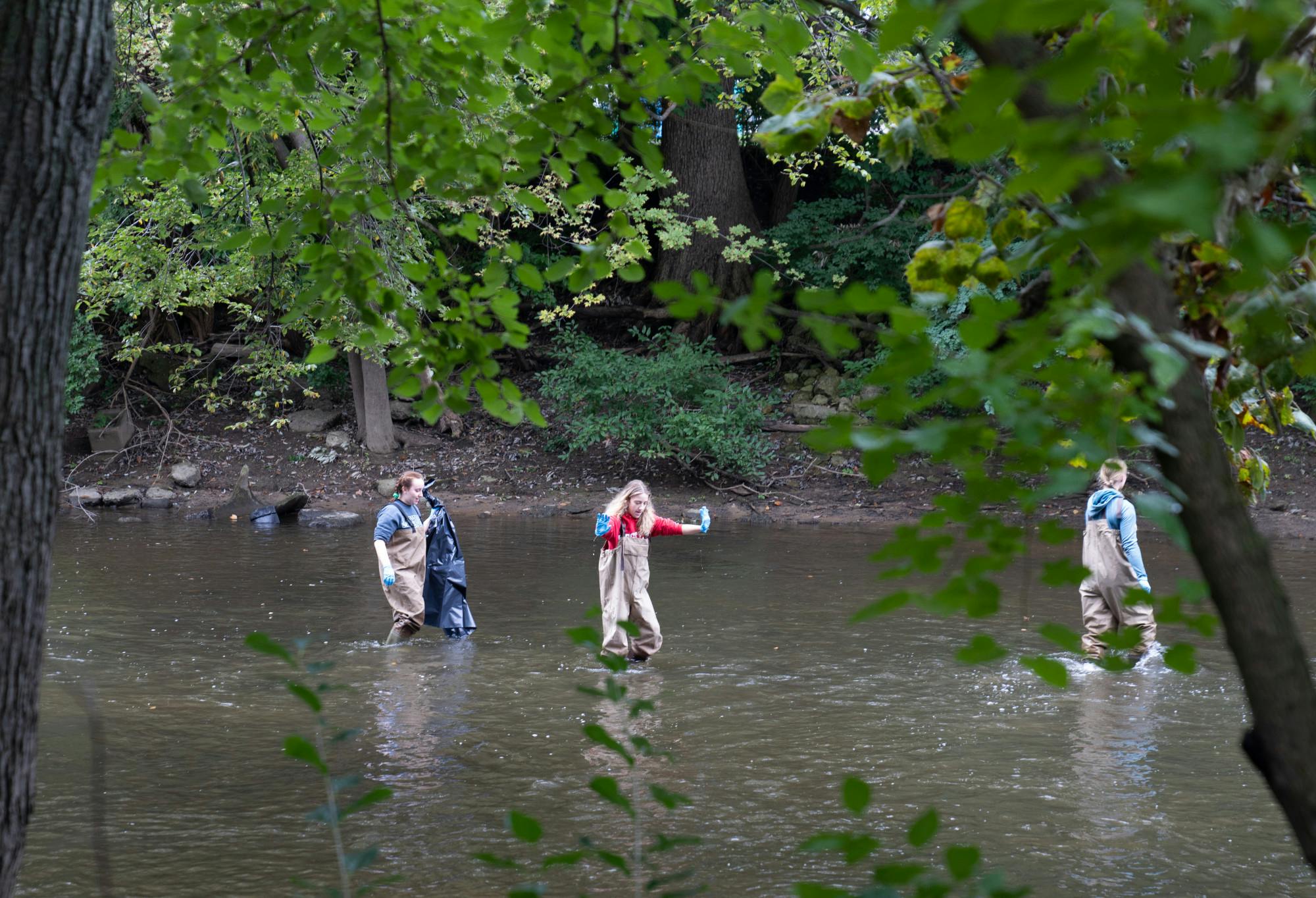From Fowlerville to Lansing, the Red Cedar River spans two counties, six local governments, 461 square miles of watershed and is 52 miles in length. The Red Cedar River is an iconic natural feature of Michigan State University’s campus.
“To me, the river is the heart of campus," film sophomore Lexi Smith said.
This heart, however, has a long and storied history with the pollution that comes alongside industrialization and urbanization. Game day trash, cans, plastic bags, a few bikes, the occasional electric scooter and more can be seen getting dredged out of the river during the semiannual student-led cleanup.
“I saw a toilet by the bridge just sitting there,” kinesiology freshman Isabela Griwatsch said.
It is perfectly within reason to see the state of the river and assume the worst.
“It’s beautiful, but I bet the water is gross," biology secondary education sophomore Meredith Jones said.
Jones has spent time collecting water samples and monitoring macroinvertebrate species variation to indicate pollution. Macroinvertebrates are insects that do not possess a spine or spinal structure.
Their life cycles are delicate and the species are used to monitor habitat health by dividing them into two groups: pollution tolerant and pollution intolerant.
Habitat health is monitored by collecting samples and observing the variation between tolerant and intolerant species present. Low species variation typically indicates higher pollution levels as the less tolerant insects cannot survive the changes to their habitat.
Monitoring macroinvertebrate populations is one instance of researchers using what is called an indicator species. These species can range from bugs to mammals all the way down to bacteria present in a given body of water. They are chosen by their ability to reflect the current state of an environment.
With the Jones' research, she found a good mix of tolerant and intolerant species, proving to her that the river is on a healthy trend.
Like macroinvertebrates, bacteria such as E.coli can also be used as an indicator species.
Ruth Kline-Robach, water sources outreach specialist for MSU's Institute of Water Research, said there are lots of sources of E.coli.
According to her research, E.coli can come from any number of sources such as wildlife, human septic systems, farmland runoff and even rainfall.
“We’re all filled with bacteria … warm blooded animals, in their guts have bacteria," Kline-Robach said.
From the Institute of Water’s yearly report on E.coli levels in the river, “most strains of E. coli are not dangerous, but they can indicate the presence of more harmful, disease causing bacteria.” The report goes on to say “Michigan’s rivers, streams and lakes frequently exceed these standards, posing risks to human health.”
The standards vary from site to site and are established by the state of Michigan. MSU’s yearly report reveals that for partial body contact, river levels cannot exceed 1,000 colonies per 100ml. For full body contact, levels cannot exceed 300 colonies per 100ml.
Looking at the water monitoring report from 2022, the Red Cedar River exceeded partial body contact levels four times out of the 17 times it was tested, never exceeded full body contact levels out of the 17 times it was tested.
This means that the water is healthy enough to dip a foot or hand into, but not enough to submerge one's head in. Either way, the tests depicted the Red Cedar as healthy to an extent.
As for other contaminants such as heavy metals, Kline-Robach said that there is no particular concern of that in the Red Cedar.
Support student media!
Please consider donating to The State News and help fund the future of journalism.
A contaminant that the state of Michigan is starting to monitor is chloride, road salt.
“We’re gonna have to take a close look at what we’re doing in terms of management strategies for that,”
Kline-Robach said.
Road salt has become a growing concern for state officials as runoff from winter roads that finds its way into local waterways isn’t fully researched yet.
New research continues to be conducted on the state of the Red Cedar River, keeping the "heart of campus" in check and healthy for generations of Spartans to enjoy.
Discussion
Share and discuss “Research continues on the health and wellness of the Red Cedar River ” on social media.



